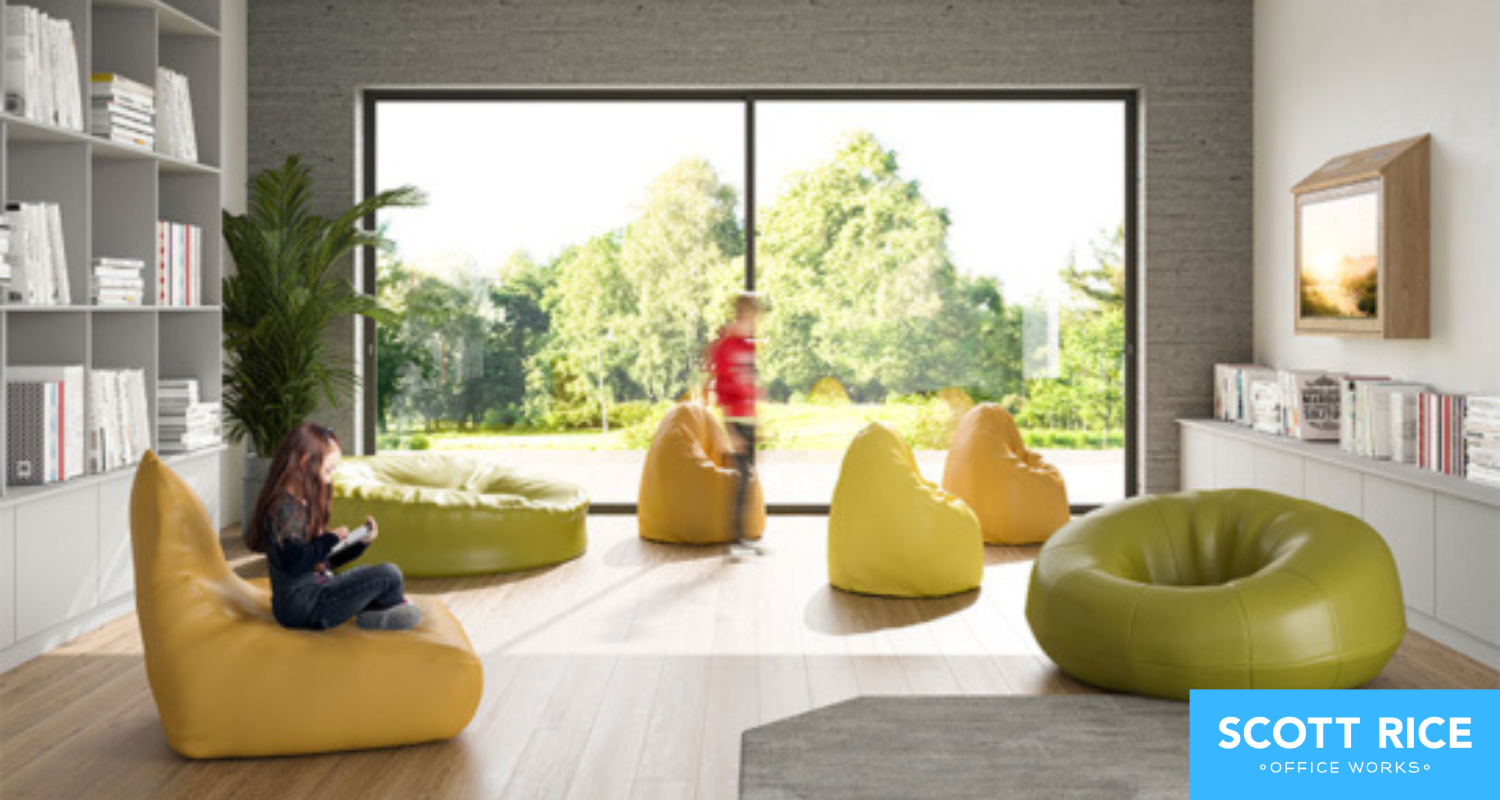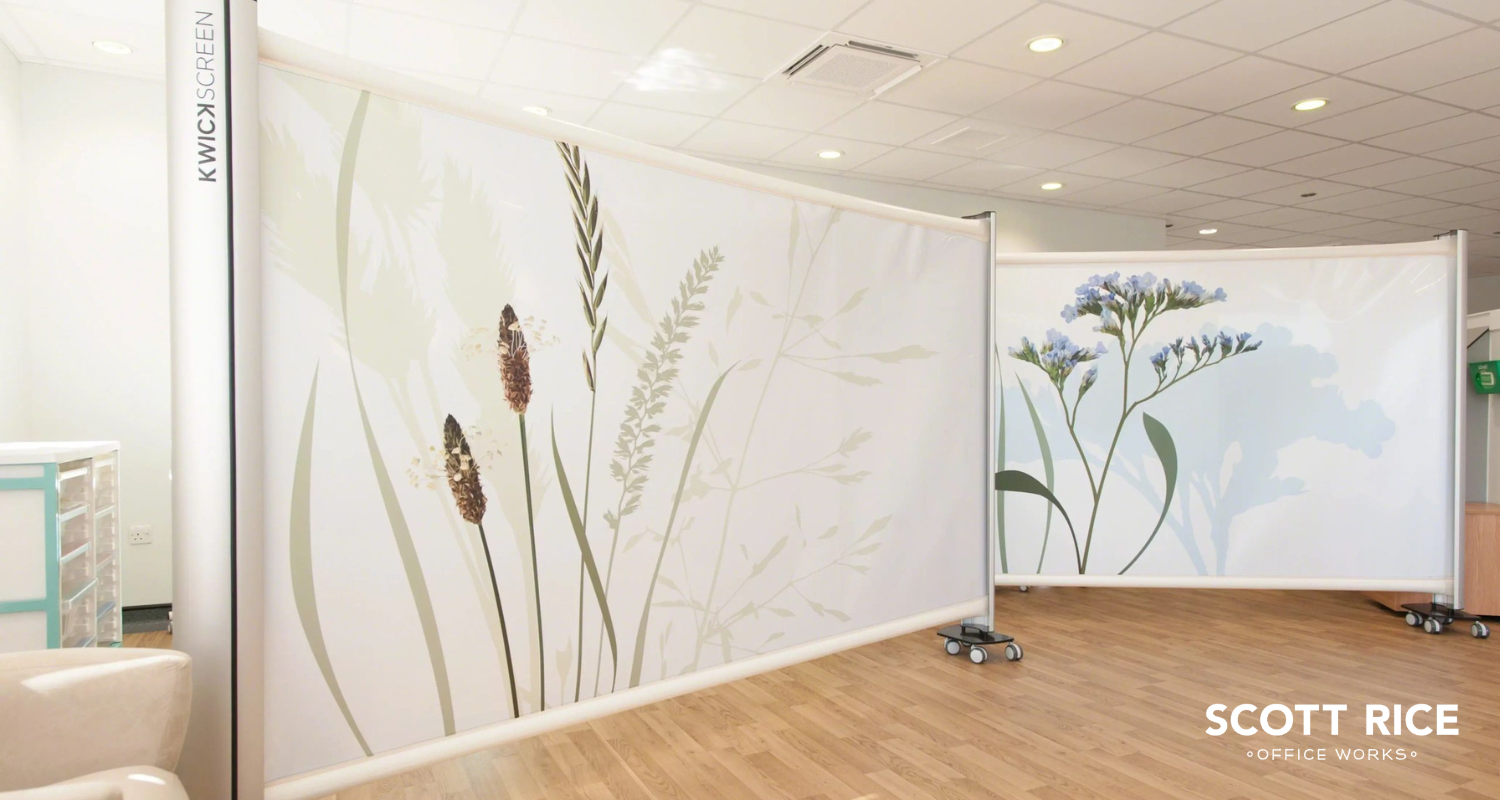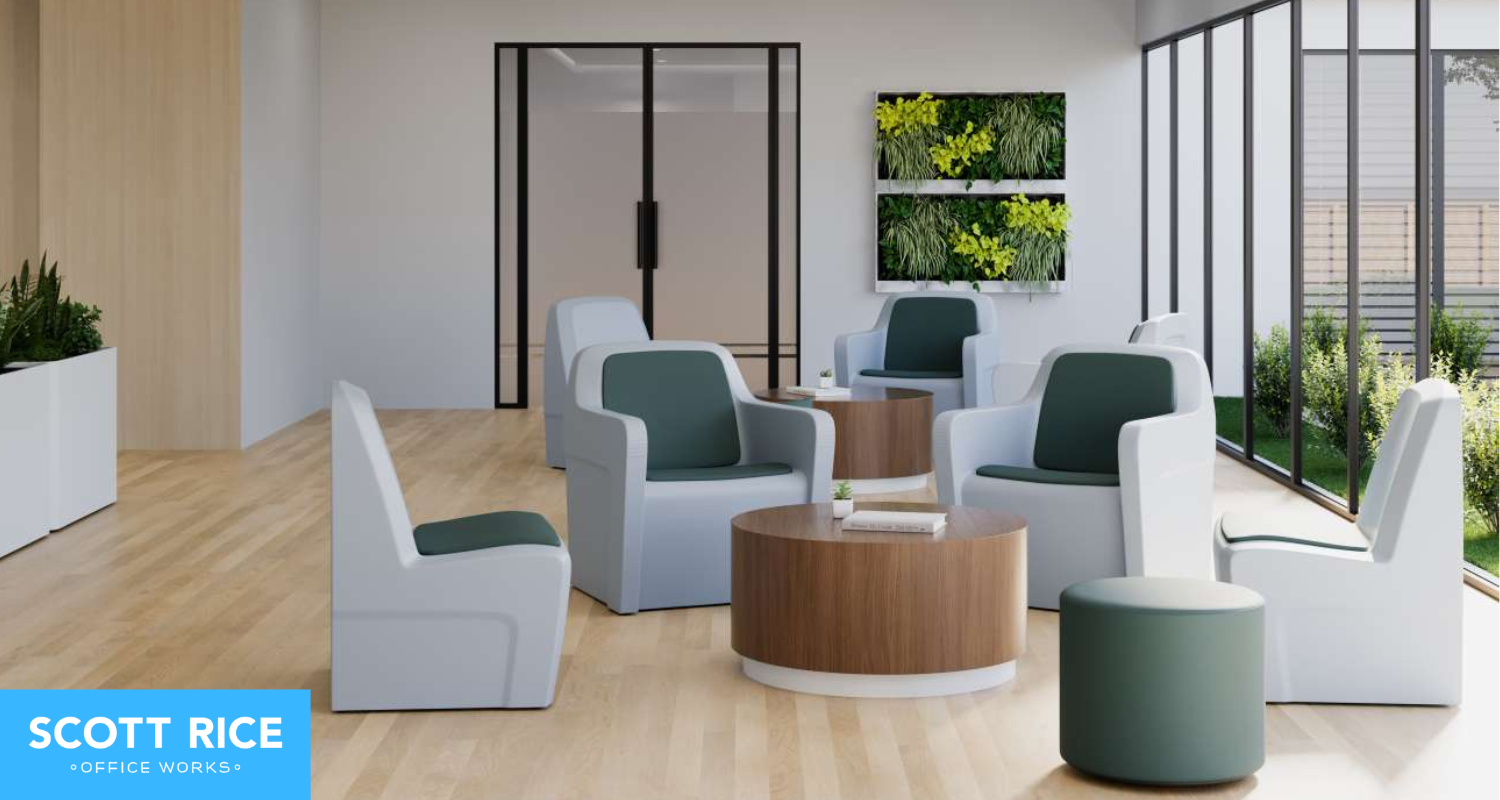The healthcare industry is on the pulse of design transformation. With numerous organizations vying for attention, new hospitals are emerging and existing ones are undergoing extensive renovations – all to attract the same patients.
As healthcare providers tackle the ever-shifting challenges of a rapidly changing landscape, the spotlight shines brighter on thoughtful and innovative design.
In this blog, we’re peering into healthcare design trends through the lens of industry leaders who recently immersed themselves in the vibrant atmosphere of the Healthcare Design Conference + Expo, a vital hub for healthcare professionals, designers and architects to gather and explore the latest innovations.
Steve Jobe, Vice President of Healthcare Sales, Erin Cammel, Healthcare Consultant, Kristin Horst, Healthcare Consultant and Annie Adrian, Healthcare Consultant, share key design trends that will influence how healthcare spaces will look and feel in the future.
Trend #1: The Power of Human Connection
Let’s begin with the heart of the conference: human-centric design. The spotlight is firmly on humanization, embracing the holistic and the humane. This goes beyond bricks and mortar; it extends to the realm of perception, dismantling outdated stereotypes about mental health.
 Redefining Care Through Materials
Redefining Care Through Materials
Designers are getting savvy about diverse needs across different locations, fostering a more comprehensive approach. A recent revelation has been the incorporation of bean bags into behavioral health, a seemingly unconventional choice that’s been spearheaded by industry leader, Pineapple.
“The comfort of home is part of the healing process.” Horst says. “The attention to detail is remarkable, incorporating elements like the warmth of wood while maintaining easy clean ability. It has a more elegant and hospitable feel.”
The fabric industry strives to balance rigorous hygiene standards, stemming from COVID protocols, with the need for inviting spaces. In response, they’re creating products resilient to potent bleach treatments. In some cases, instead of using traditional vinyl materials that often promote a sterile environment, they’re using comfortable, woven fabrics to shift away from the typical sterile feel of healthcare spaces, all while infusing the textiles with whatever the needs may be; a fluid barrier, PVC backer or a topcoat.
“Textile manufacturers have embraced a Krypton-type aesthetic for their fabrics, allowing it to be more welcoming and homier as opposed to an institutional feel,” Jobe explains.
Finishes to Support Well-Being
The overall impact of a space is influenced by furniture choice and finishes. It goes beyond patient satisfaction. It’s about creating an environment that eases the challenges faced by healthcare professionals working grueling 24-hour shifts. Whether it’s a comforting upholstered piece for those waiting anxiously, or ergonomic support for doctors in their workspace, the choice of furniture is key.
“Any kind of tactile finish plays a crucial role in providing comfort, particularly in situations where concerns about a family member or loved one’s well-being are prevalent,” Horst says. “Support, in any form, becomes essential to alleviate the emotional burden.”
In the pursuit of warmth and comfort, Kwalu Furniture continues to achieve design excellence while promoting cleaner surfaces. Their patented product, a composite product that mimics the look and feel of wood, provides a more elegant feel. The incorporation of cleanouts, a design element that facilitates easy access for cleaning, and ergonomic considerations further reflects a commitment to exuding a sense of home.
Trend #2: The Behavioral Health Revolution
During the pandemic, mental health care utilization soared, amplifying the conversation surrounding behavioral health, which ranges from addressing substance abuse to tackling severe mental health conditions. In response, manufacturers are embracing human-centric designs and versatile products, signaling a shift toward a more holistic approach.
Championing Innovation for a Brighter Tomorrow
Previously unexplored territories are now bustling with innovation, where manufacturers, previously with limited product portfolios, have either elevated existing offerings or introduced fresh ones into the arena.
Even industry giants like La-Z Boy, renowned for their height-adjustable recliners, have shifted their focus to enhance offerings. By prioritizing effective space separation – an essential consideration in behavioral health settings – La-Z Boy enables the creation of multiple pods in open areas. This marks a departure from the norm, where products typically come in limited sizes.
Thoughtful Design for Enhanced Experience
The industry strategically embraces thoughtful design, acknowledging its profound impact to shape both emotions and physiological responses. Notably, a conference highlight was Carolina’s WAVY hand, an ingenious built-in fidget tool enhancing the user experience. Pineapple further breaks barriers, introducing a behavioral health recliner that incorporates a chaise lounge for comfortability.
Additionally, deliberate use of color has the remarkable ability to positively enhance the overall experience. Examples of positive color use include:
- Cool Tones (Blues and Greens): Instill a sense of calmness, reducing stress and anxiety.
- Warm Tones (Reds and Oranges): Infuse energy and stimulation, fostering motivation.
- Soft Neutrals (Greys and Earth Tones): Amplify concentration and clarity of thought.
- Bright and Cheerful Colors (Yellows and Greens): Evoke positive emotions, making them particularly suitable for healthcare environments.
- Natural Colors Inspired by Nature: Contribute to a calming and restorative effect.
Trend #3: Mastering Flexibility and Privacy
In the contemporary design landscape, private spaces break free from the limitations of permanent walls. Picture inviting phone booths or flexible privacy screens, such as the KwickScreen, embody the concept of adaptable spaces that can change without extensive construction.
“Healthcare design is ever evolving, because what works now might not work in six months,” Cammel says. “So, having furniture that isn’t going to be attached or cost a lot of money to move in six months is a big deal.”
Privacy screens not only play a crucial role in privacy and adaptability, but also address the prevalent issue of infection control. Unlike traditional large curtains that can harbor bacteria, the easy-to-clean Kwick Screens offer a more hygienic solution.
“The curtains fester so many bacteria, and they’re having to throw them away or wash them frequently, contributing to excessive water usage,” Adrian explains. “Embracing alternatives like quick screens is a more sustainable choice.”
 Revolutionizing Telemedicine Experiences
Revolutionizing Telemedicine Experiences
Privacy is essential for confidential discussions and activities such as changing clothes and engaging in telemedicine sessions. Physicians should be able to decide how much privacy they need to interact with patients, discuss sensitive matters and record daily occurrences.
Steelcase introduced a captivating new product that places a strong emphasis on privacy. Although not yet introduced to the market, Ghost is essentially a private space equipped with technology that creates a lifelike presence during virtual interactions. For instance, when a physician engages with a patient, it gives the impression that the patient is physically present rather than in a remote call.
“It will enable greater personalization of Zoom and Teams calls with patients,” Jobe says, emphasizing its broad applicability across various markets such as commercial and education.
Much like the reluctance some have towards commuting to the office, the appeal of telehealth medicine lies in the simplicity of avoiding unnecessary travel.
“Why endure the hassle of visiting a doctor’s office when you can consult with someone right from your couch?” Cammel says. “Maintaining human connection is crucial, providing a sense of familiarity and making the interaction feel more personal even if it’s over a call.”
Trend #4: Bridging Healthcare and Corporate Design
Healthcare spaces are no longer confined to a cold, institutional look. Instead, they are melding with the stylish aesthetics of business environments. Thanks to new fabrics and coatings, healthcare furniture is shedding its old, stuffy image and rubbing shoulders with the corporate cool crowd.
Manufacturers are leading this fusion by considering the specific needs of healthcare areas such as behavioral health, orthopedic clinics and primary care. The focus is shifting from a one-size-fits-all approach to planning for diverse patient populations.
It’s not just about looking good; it’s about making these spaces work for everyone.
“Many healthcare facilities initially adhered to a standard, which was efficient. Now, they truly are taking the time to think about what’s going on and what the patient flow is,” Cammel says.
The collaboration between furniture manufacturers and architecture and design firms plays a pivotal role in this evolution. These partnerships are particularly crucial in the early stages of a project, influencing the design and functionality of spaces to adapt them to the unique needs of healthcare environments.
Trend #5: Shared Commitment to Purposeful Spaces
Architects and designers, often operating in separate spheres, discovered common ground at the conference by bridging their individual visions. Their joint commitment to customizing specific areas of buildings for students and faculty, while recognizing the challenges faced by healthcare professionals, exemplifies a profound dedication to excellence.
“It’s hard for anyone in healthcare to want to keep coming back every day,” Adrian says. “To hear how intentional the architecture firm was in how they created buildings inspired me to be more intentional of what that space means to the people who will be using it every day.”
In the dynamic arena of healthcare, where devoted workers are vital pillars of support, both designers and architects draw inspiration from the efforts they put forth daily. These unsung heroes merit not only gratitude but also an enriched daily experience. In design, that means knowing that each day brings a new medical study, a fresh perspective and an opportunity to refine and redefine.
 Transform Your Healthcare Design with Scott Rice
Transform Your Healthcare Design with Scott Rice
As we wrap up our exploration of design trends unveiled at the Healthcare Design Conference + Expo, it becomes increasingly clear that the future of healthcare spaces transcends aesthetics, embodying a profound commitment to enhancing the human experience. From designs centered around well-being and behavioral health to the seamless integration of corporate aesthetics, we’re embracing a future marked by thoughtful innovation and a heightened emphasis on enhancing lives.
Reflecting on the conference’s transformative journey, Jobe says, “While we may not be experts in the technicalities of these medical spaces, our strength lies in posing the right questions – understanding the movements, needs and nuances. In a field as dynamic as healthcare, where today’s expertise can become outdated tomorrow, our adaptability is paramount.”
At Scott Rice Furniture, we’re your consultative partners, offering a diverse menu of solutions ranging from floor coverings to architectural walls. Contact us today, and together, let’s craft a space that integrates humanity into every aspect of your healthcare design.

